Dehydration in Dogs - Signs & Prevention
21.03.2021.
All mammals rely on water for their survival. There is a good reason for that; most body functions depend on water. Water helps lubricate joints, cushion the internal organs, carry oxygen to cells, regulating body temperature and digestion. Dogs are no exception, and just like humans, they need water to survive. Dehydration in dogs can be very dangerous. If you notice signs of dehydration in dogs, you should immediately do something. If left unchecked, dehydration can lead to organ failure and death. Here is what you should know about dehydration in dogs.
What is dehydration in dogs?
The easiest way to explain dog dehydration is - The dog’s body loses more water than it is taking in. Dogs lose water every day through defecating, urinating, evaporating through paws, panting, and even simple breathing makes the dog lose water. The key thing is - the dog needs to replenish fluids by drinking water.
How dangerous is dog dehydration?
Severe dog dehydration is very dangerous. If you notice signs of dehydration in dogs, you should take action as soon as possible and make sure your dog gets enough water.
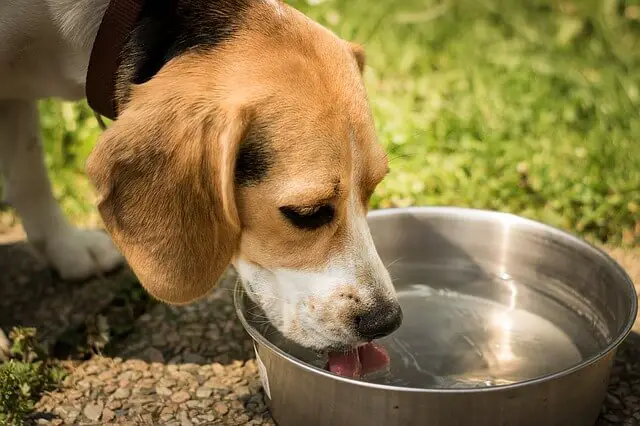
If the dog reaches a point where their water intake isn’t enough to make up for the fluid their body spends, the overall fluid volume in their body will drop. The first thing that can happen is - organs and tissue will not receive enough oxygen. The dog will lose electrolytes, like potassium, chloride, and sodium. These are vital minerals used in several essential body functions: nutrient absorption, muscle function, nerve functions, and balancing the body’s pH levels.
The worst-case dog dehydration scenario can lead to kidney failure. Other organs will be affected too. If the dog doesn’t receive emergency medical attention, they will most likely not make it.
What causes dog dehydration?
The only cause of canine dehydration is not enough water intake. The dog lost more fluids than they have taken in, and they are getting dehydrated. However, some health concerns can cause dehydration, and they can prevent a dog from drinking enough. Things like;
- Acute vomiting and diarrhea attacks
- Heatstroke
- High fever
- Severe infections accompanied with a fever
can cause dogs to suddenly lose their appetite and stop eating or drinking. If you notice symptoms like that, you should keep a close eye on your dog. If they don’t start drinking soon, you should take them to the vet.
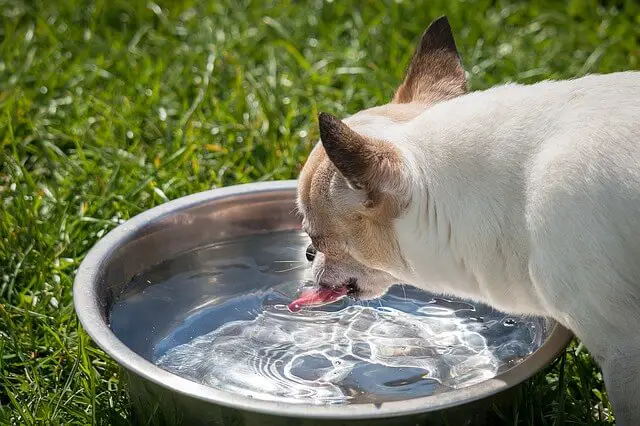
Dehydration in dogs can be an underlying cause of severe health issues. These problems will block the dog’s body from retaining water and can only be solved when the underlying conditions get under control. Some of these health concerns are;
Signs of dehydration in dogs
As dog owners, we should be familiar with the signs of dog dehydration. If you know what to look for, you will know how to react and what to do about it. Knowing the signs of dehydration in dogs can help vets discover diseases before they become life-threatening. The most common signs of dehydration in dogs are;
- Loss of skin elasticity
- Vomiting (accompanied with diarrhea, but not necessarily)
- Appetite loss
- Sunken, dry-looking eyes
- Low energy
- Lethargy
- Thick saliva
- Dry nose
- Pale, dry gums
Skin elasticity
One of the easiest things to spot and the most telling signs of dehydration in dogs is skin elasticity loss. Well-hydrated dogs will have elastic skin. The best way to test that is to grab the skin between the dog’s shoulder blades. The owner should grab the skin, gently raise it, and let it go. A well-hydrated dog’s skin will fall immediately into place. You should do that often to check whether your dog is sufficiently hydrated.
In dehydrated dogs, the skin will not get back into place immediately. Instead, it will take a longer time to fall where it should be. Some breeds have wrinkly skin, like the Shar Pei or a Bulldog. Owners should test these breeds’ skin often because it will be harder to notice their skin elasticity.
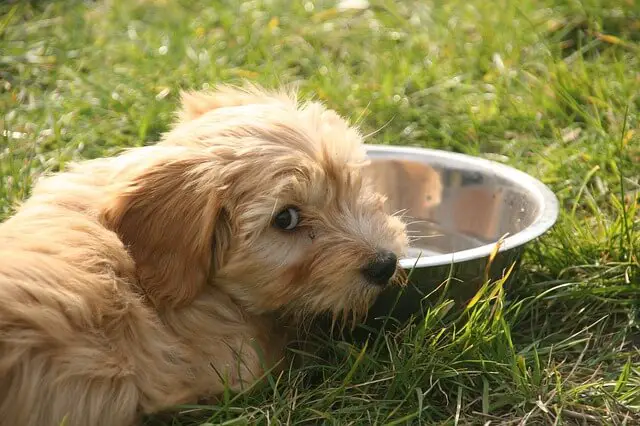
Gum test
The second thing you can do to check whether your dog is dehydrated is to check their gums. The gums of well-hydrated dogs should be moist and pink. In dehydrated dogs, the gums are sticky and somewhat pale. You can lightly press your finger against the dog’s gums, and after you remove it, the white area should become pink very fast. In dehydrated dogs, the time the gums take to regain their color will be significantly longer.
How to treat dehydration in dogs?
The first thing you should do if you suspect your dog is dehydrated is to provide them with plenty of clean, fresh water. The second thing you can do is give your dog fluids rich in electrolytes. Products like Pedialyte are great for restoring the electrolyte balance. However, that is only viable if the dog is not vomiting, and you should check the correct dosage with your vet.
If the dehydration results from heatstroke or constant diarrhea and vomiting, you should take your dog immediately to the vet. These conditions are considered an emergency, and your vet can replenish the dog’s fluids directly through an IV.
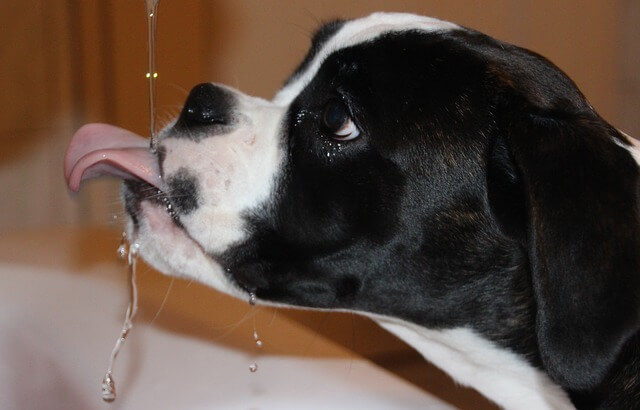
How to prevent dehydration in dogs?
The battle against dehydration is won by never allowing your dog to get dehydrated in the first place. Make sure you take plenty of water with you wherever you are taking your dog. Some dogs need a lot of water, so make sure you provide your dog with a constant source of fresh, clean water they will have excess to.
Make sure you don’t overexercise your dog during the hottest days. Take them for a long walk or a playing session when the temperature is down. Avoid the hottest parts of the day, and make sure you take plenty of water with you to the park.
Keeping your dog safe from diseases is sometimes impossible, but preventing them from eating things off the ground and teaching them commands like “let go” is certainly something all responsible dog owners should do. It is also vital to keep your dog up-to-date on their vaccines. That is the best way to prevent them from getting severely sick.
World Dog Finder team

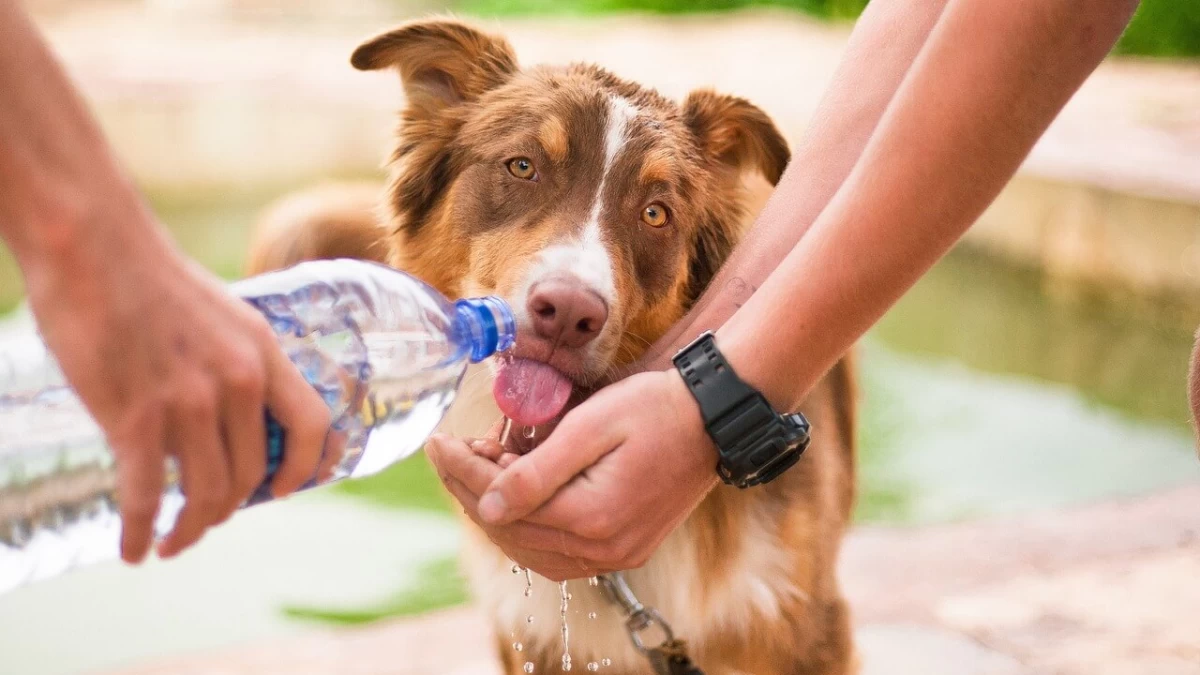





Share